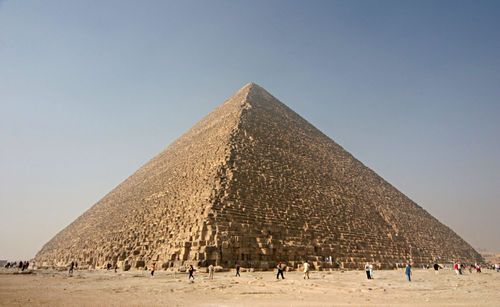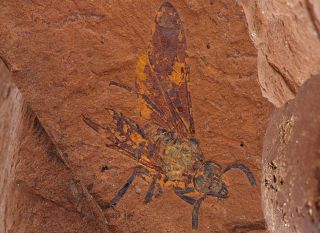I amuse myself -- or geeky distractions for a snowy Thursday
This has been cracking me up. Since I knew that you were as geeky as I am, I thought that I'd share my amusement with you.
Of course, it's a little complicated -- otherwise it wouldn't be so amusing.

This is the Great Pyramid of Giza.
Using primarily conscripted labor (not slaves as the Greeks thought,) it took 27 years to build. For more than 3500 years, it was the tallest man-made building in the world. According to Wikipedia, "Approximately 5.5 million tonnes of limestone, 8,000 tonnes of granite, and 500,000 tonnes of mortar were used in the construction."
It's a monument to power and wealth. A boast that this Pharaoh was the wealthiest and most powerful person in the entire world.
Because grave robbing was common, this pyramid had such complicated anti-theft devices that the builders felt like it was impossible to get inside.
Graffiti inside the tomb helped determine that the structure was built by Pharaoh Khufu. Only then, were attributions found from authors, Herodotus and Diodorus Siculus.
What are we talking about here?
Basically, this Pharaoh, with all of his wealth and power, created a monument -- a tower if you will -- to himself and had his remains entombed there.
The tomb was robbed less than a year after it was finished. The people who entered the pyramid tunneled to an area just past all of those anti-theft mechanisms. Over time, they took everything -- including the Pharaoh's remains.
Khufu's pyramid stood empty -- a monument to no one -- for thousands of years. The Pharaoh who'd spent all of that money, effort, and time would have been lost to history if those making it hadn't left his name on the wall.
Here's the thing, the only way a person could enter into the Egyptian after-life is if living people knew and said his name.
It wasn't until the 1800s that anyone knew who was buried in this pyramid. And even then, it wasn't until the 1900s that anyone agreed.
As with most things ancient Egypt, it's always possible that Khufu wasn't the owner of this tomb.
Can you imagine spending all of that effort and money in an effort to be remembered, and enter the after life, but no one remembers you?
It's surprisingly common.
The wealthy and powerful believe that they are leaving a "legacy." However, they are mostly forgotten.
Even if they are remembered, often times their "legacy" is an embarrassment to their descendants. We've seen this recently with names being taken off sports teams, buildings, and statues coming down.
This is as true for wealthy people who own buildings as it is for best-selling authors or a woman who chased the Nazi's out of the Americas.
We live now and die.
No matter how wealthy or powerful we are, we are forgotten -- even if our names are on buildings or we save the world or we run countries. (Don't believe me? Who was John Tyler?)
I find that quite refreshing, actually.
There's another side to this situation.

This is a sawfly that lived in the Miocene epoch, a time period that lasted from 23.03 million to 5.33 million years ago in what is now Australia.
At the time, Australia was a rain forest. By the end of this era, the environment became more like Australia is today.
This sawfly still has pollen on it.
We know what it is. We have even named it.
This fly, unearthed by a farmer, has a better chance of being remembered, categorized, and studied than the Pharaoh Khufu, who may have built a pyramid to celebrate himself.
This is actually how life works.
We know that there was a set of women who gave us each the same mitochondria and a man, who came much later, who gave modern men his "Y" chromosome.
They have names. "Mitochondrial Eve" and "Y-chromosome Adam." We can mark much of human migration, and thus human history, through their genetic donation. They are studied and talked about.
To the Egyptians, they are living a rich after-life.
Like this sawfly. It will be studied for a long time. There will be papers written about it. It will be famous and people will go see the sawfly. We'll learn about its life and activities. We'll know what it ate, how it procreated, and what life was like at that time.
This won't happen for the Pharaoh Khufu.
For all of his efforts, it's possible that a hundred years from now, no one will know his name. It's just as likely that someone else built the pyramid.
When you see these men and women prancing around, showing off their wealth and power, remember this -- they will likely be forgotten. Their wealth will be squandered either by ungrateful descendants or forgotten in whatever hiddy hole they shoved it into.
Money and power fade. The meaning of even the greatest monuments is usually lost in the sands of time.
Time and death are the great equalizers.
If you ever feel unimportant or forgotten, just remember old Khufu and his pyramid.
He would have been better off to be a sawfly.
-----
